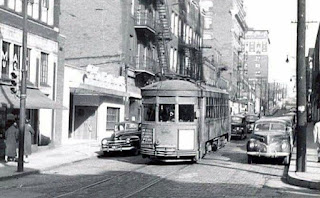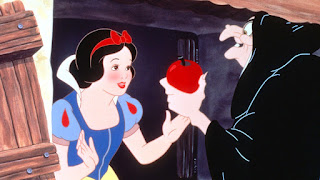With the 1950s ( or late 1940s) I add my childhood memories to this history—especially about places that may in some ways be the same, but in many ways have changed.
Those who have studied memories make a couple of relevant points. First, that we tend to remember “first times,” and unusual times, which is one reason that many of our strongest memories come from our early years. Second, that memories can be objectively incorrect, from getting the year wrong to remembering that you witnessed an event that in fact you heard about from someone else’s story. In this case, I may have “remembered” details of a tailor shop I saw in a movie or imagined, rather than the actual Severini shop. And I’m sure I’ve forgotten a lot of details.
So I invite others to check my memories, as I have checked them against known facts where possible. And of course, others will remember different details, different events, different impressions. I invite those as well.
I will organize these memories according to place. What is especially interesting to me is that many of these places still exist in the 21st century, though the buildings almost always have been transformed, and house other activities and other people. So in an important sense, these places also do not exist anymore. That makes it worthwhile to try to remember them in as much detail as possible. (The world has changed so much, some of this will feel like cultural anthropology, or perhaps archeology.) Along the way, I’ll include more family history from the 1950s.
1950s Memories: Youngwood, PA
 |
| An inter-urban trolley in 1950s Greensburg. But the trolley to Youngwood I recall was smaller. |
Instead in the mid 1950s there was an orange bus to and from Greensburg that stopped just up the street from my grandparent’s house at 200 Depot Street. I remember waiting a long time for a bus with them once, when my grandfather took the chance to go up the street to buy us ice cream cones. The bus came and went before he got back, and I remember the sight of him hurrying down the street, ice cream in both hands.
But most of the time we as a family went the six miles or so from Greensburg to Youngwood by car—or, in the 1950s, by truck: the series of gray panel trucks with the red letters on the side, starting with the big red S for Singer Sewing Machine Co.
When we lived on S. Lincoln Avenue, we might go by way of the Carbon Road down through the former coal patch community of Haydenville, known also as Red Onion, past the great hills of piled coal leavings, to pick up route 119. We made this trip so often that when my father played the game with me of driving where I told him to go, I easily got us home from Youngwood. (I remember the sign for the county home was a landmark, with its warning to drive carefully because of “aged people.” I didn’t know what “aged”—which I pronounced “a-geed”—meant. Sure do now.)
Depending on which route we took, we also passed the long Walworth building. But there wasn’t much on Route 119 after that to catch my eye until the road straightened and seemed to narrow, and a few businesses with neon lights passed by. Then almost suddenly we got to the red light that announced Youngwood, and turned left onto Depot Street.
Youngwood in the 50s: Depot Street
 |
| At 200 Depot St., the Severini house. Behind my mother and me in 1949, the Bizub shop is still there. |
Though few actual buildings on this long block of Depot St. were different, most of the businesses had gone, and it was primarily a long quiet block of residences. The Bizub’s store, next door to the Severini house, may have been the last to go. It was still there in 1949. The exceptions in the mid-50s were at the bottom and the top of the block.
At the bottom, the railroad yards were in use, and trains rumbled through, or backed up and coupled in the yards. But there was no passenger service from the Youngwood station. There were no tennis courts, nor commercial buildings near the station that I recall.
At the top of this block on the south side, the old yellow brick Inverness Hotel building was still standing (and is today) but I don’t believe it was a hotel anymore. There was some sort of bar on the ground floor, a dark realm which could be glimpsed on the rare occasion that the door was open. But my free-range play did not cross to that side of Depot Street.
Near 3rd Street on the north side of Depot Street was what seemed a new (or mostly new) and certainly large red brick building: The A & B Club. The A & B Society was (as mentioned earlier) a social and beneficial organization for Italian families. So there were meetings held in this building, including the monthly meetings of the women’s lodge, the Principessa Maria Jose #43 Council. Flora Severini Kowinski was its corresponding secretary from at least 1949 and through at least the 1950s. I remember her addressing envelopes at our dining room table, and signing letters concerning lodge business.
 |
| Gelfo 50th Anniversary party at A&B Club. At left, Dominek Gelfo dances with Gioconda Severini. |
But the A & B Club was also social. There was a large bar on the first floor with an area for card tables. My grandfather often went there to play cards on Sunday afternoons. (Once I ask where he was and my mother or my Aunt Toni said, “he’s at church,” and they laughed in a way that told me where he really was. I was sent to fetch him there at least once. Otherwise, it was off limits, so I only caught glimpses.)
Upstairs were large social rooms, with enough space for a band and dancers. I attended many events there through the 1960s, including wedding receptions and a wedding anniversary party for my grandparents, perhaps their 40th. There was a kitchen attached, so these events included dinners and parties.
 |
| 2006 photo at Depot and 4th Street, looking down towards 3rd and beyond. |
But apart from the movie theater a few blocks down 3rd Street, the magic part of Depot Street for me as a child was the block between 3rd and 4th Street.
I don’t recall the name of the movie theater on 3rd Street—in 1949 it may have been the Arcadia, and it may still have been in the 50s. It was there that I saw my first Disney movies. I may have seen the first release of “Cinderella” there in 1950. (I remember my grandmother and my mother singing the “bibbidi-boppedi-boo” song with me and Kathy.) But I’m pretty sure it’s where I saw “Snow White and Seven Dwarfs,” which was re-released in 1952. (That bright red poison apple terrified me.) This movie was Disney’s first animated feature, released in 1937, so it’s possible that I saw it at the same theatre where my mother did.
I remember being accompanied to at least one of these movies by an older boy and perhaps his sister who lived several doors down Depot Street from my grandmother’s house. I remember that even later, when I was going to movies in Greensburg for a quarter, I saw some movies in Youngwood where admission for children was still a dime.Between 3rd and 4th streets was the main commercial block of Depot Street in the 1950s. There were several stores of interest, with soft drinks and penny candy. But mainly, the attraction was ice cream. There must have been several places that sold ice cream, though the one that remains in memory was the large drug store on the corner of Depot and 4th Street. I wish I could remember what it was called in those years. It was still Rexall until at least 1949. Carl Severini remembers it as Bayer’s later. That doesn’t ring a bell for me.
Whatever it was called, it was a magic place. Taking up much of the ground floor of the Miller building, it was a large space with a high ceiling that had that pharmacy smell, but was so brightly lit, with aisles of products, including magazines and—especially—comic books. The entrance was especially colorful, in a style I now believe was an Art Deco holdover from an earlier decade. There was a large soda fountain, and best of all were the large ice cream cones, probably imitations of Isaly’s “skyscraper” cones. Perhaps it was this store or another on this block that specialized in a vanilla ice cream with cherries in it, called White House. If that wasn’t enough, there were shops and small eating places along 4th street, at least one of which also had ice cream cones.
The magic of Depot Street started with the sidewalks, some of which sparkled. As a child, you really notice sidewalks.

No comments:
Post a Comment